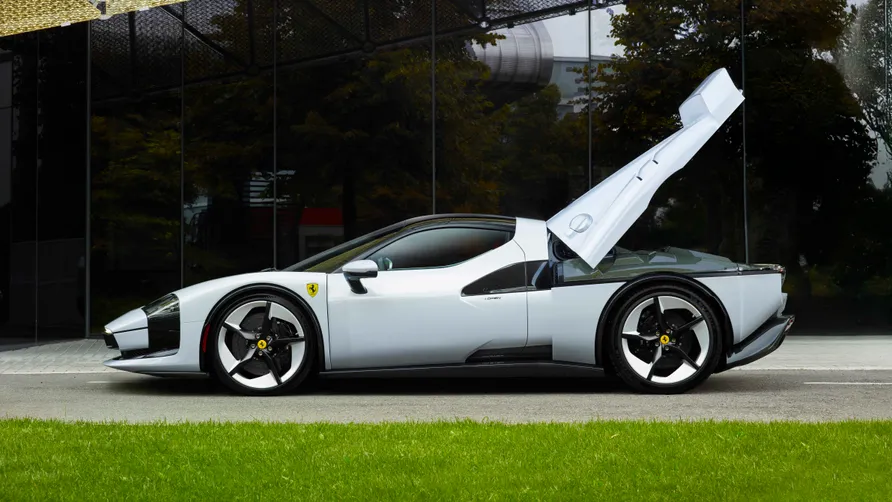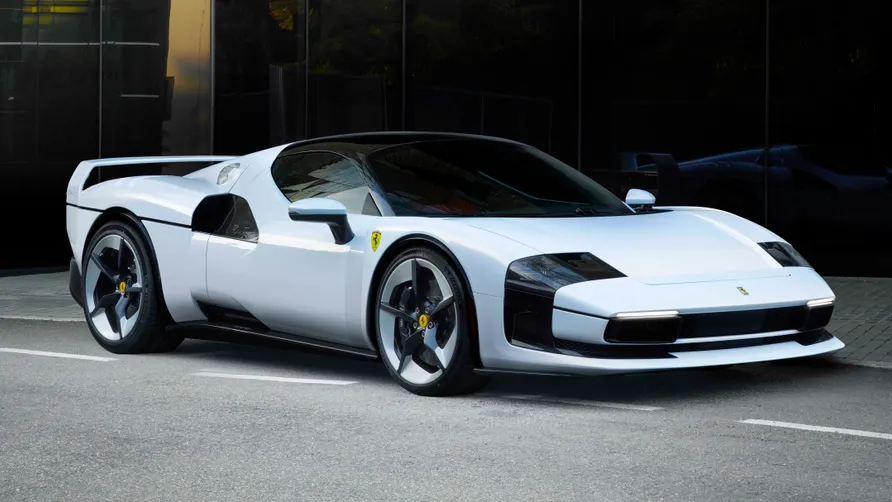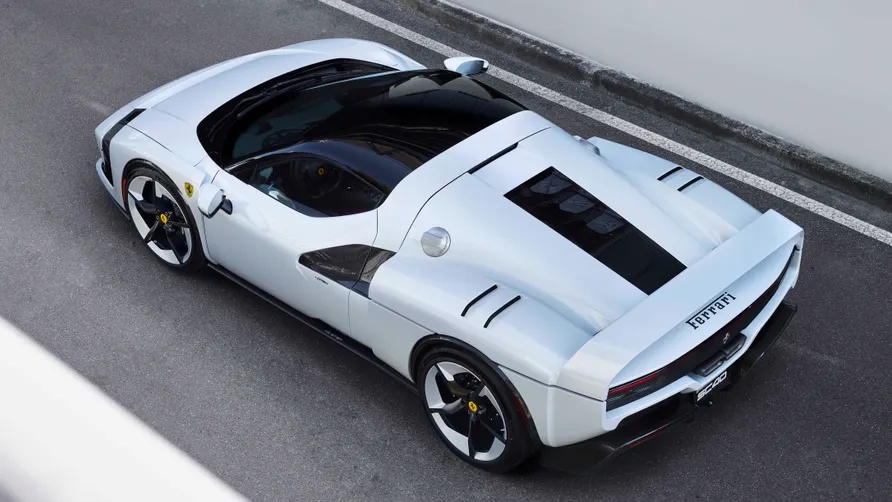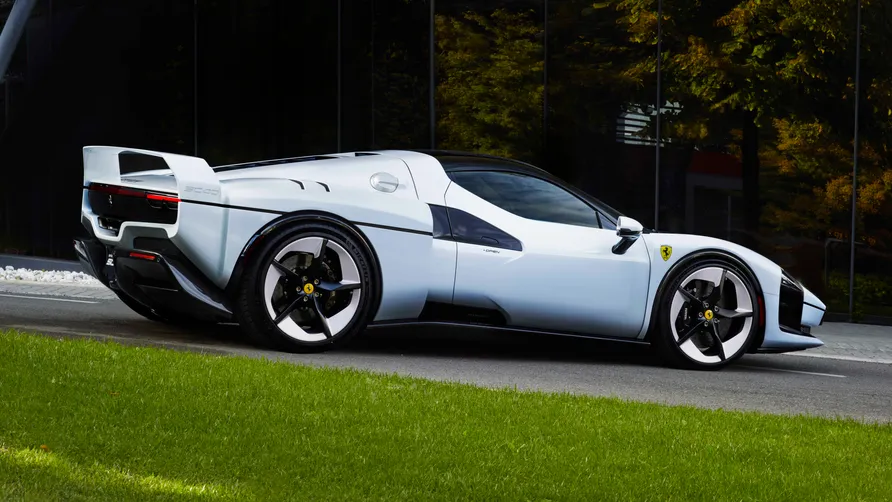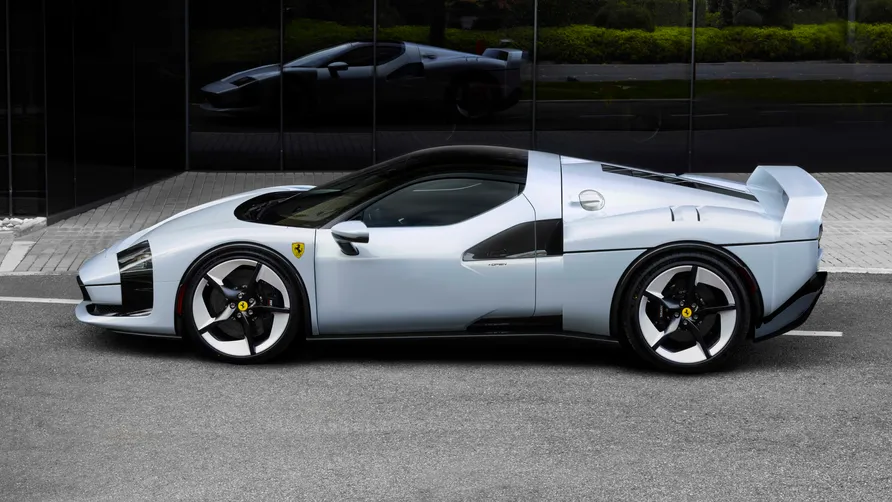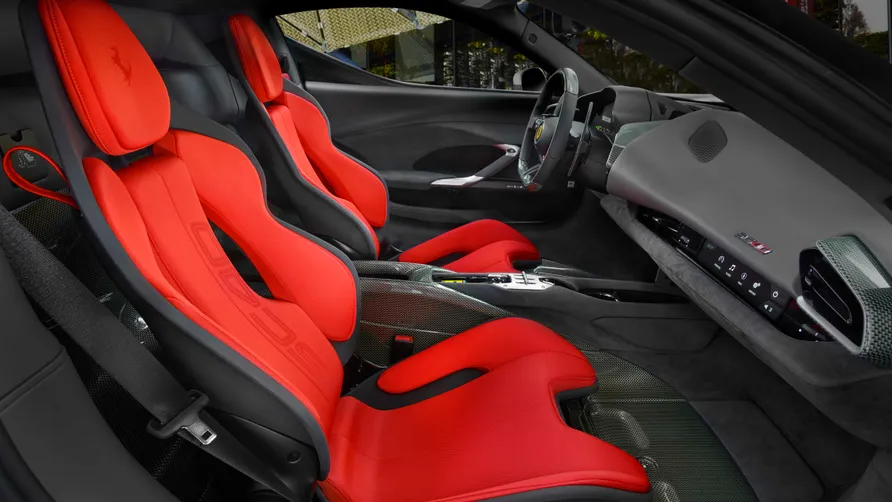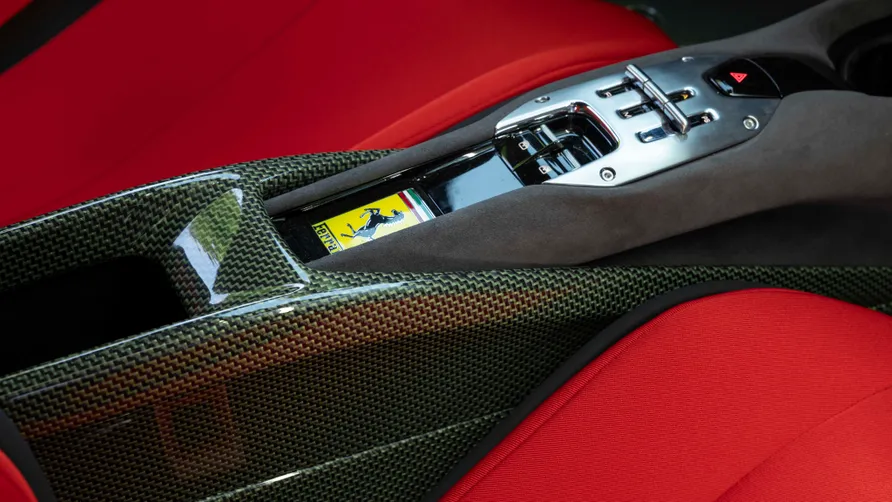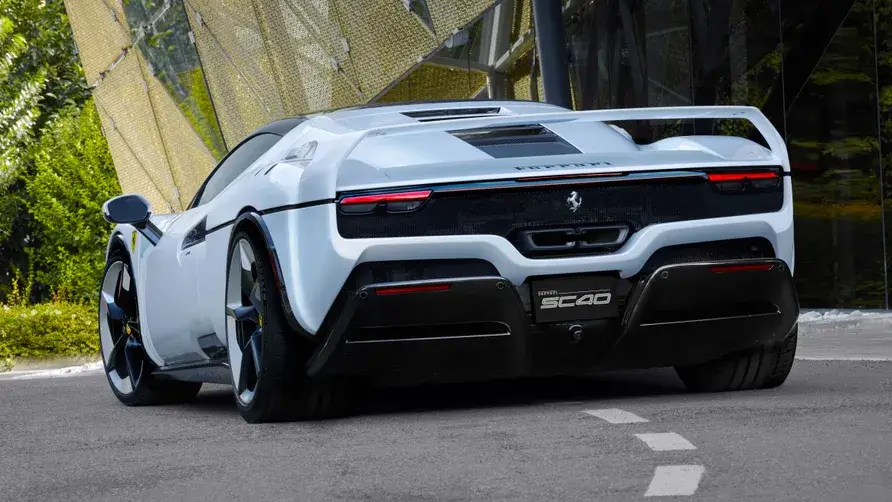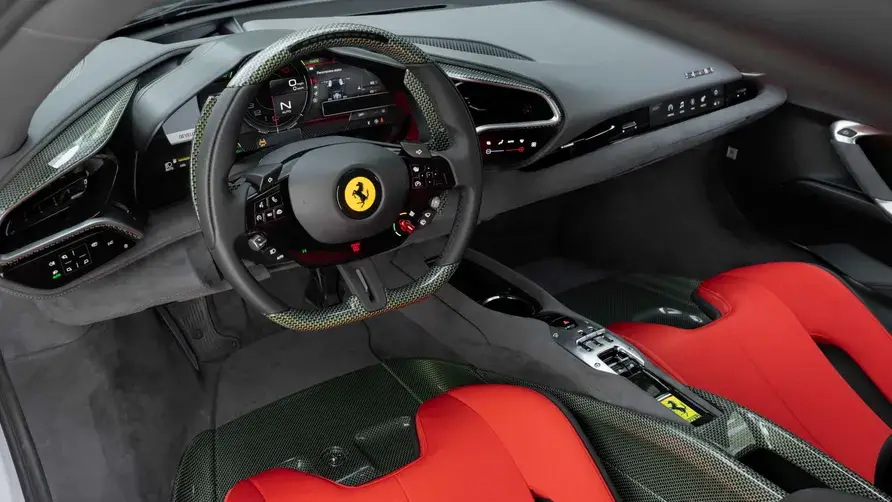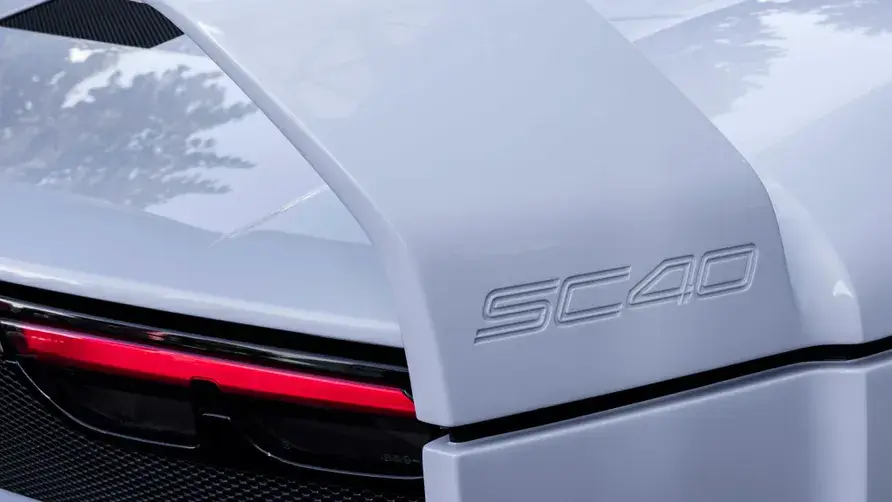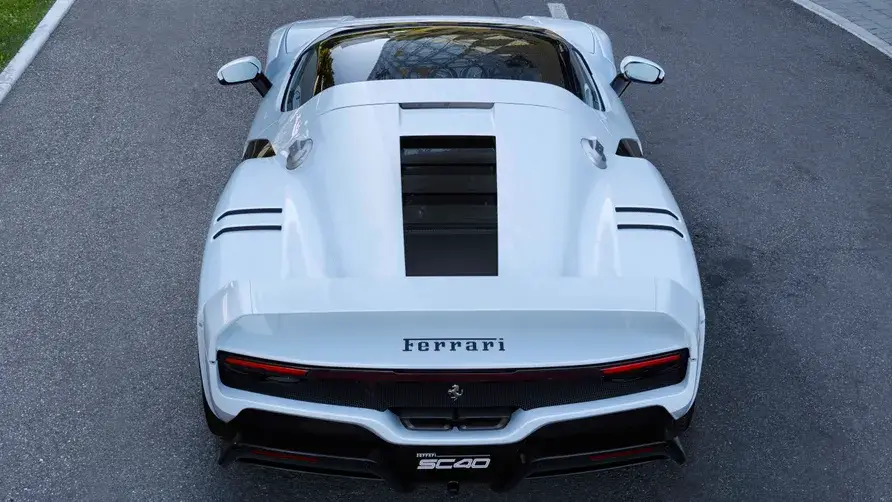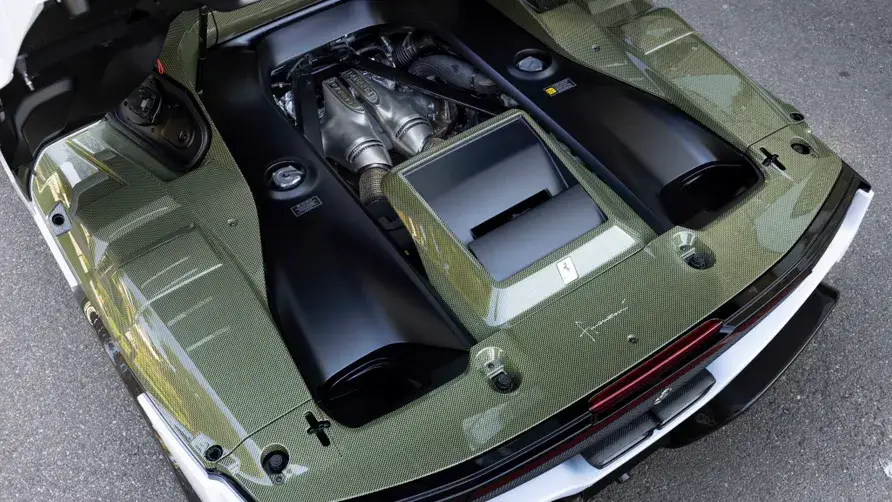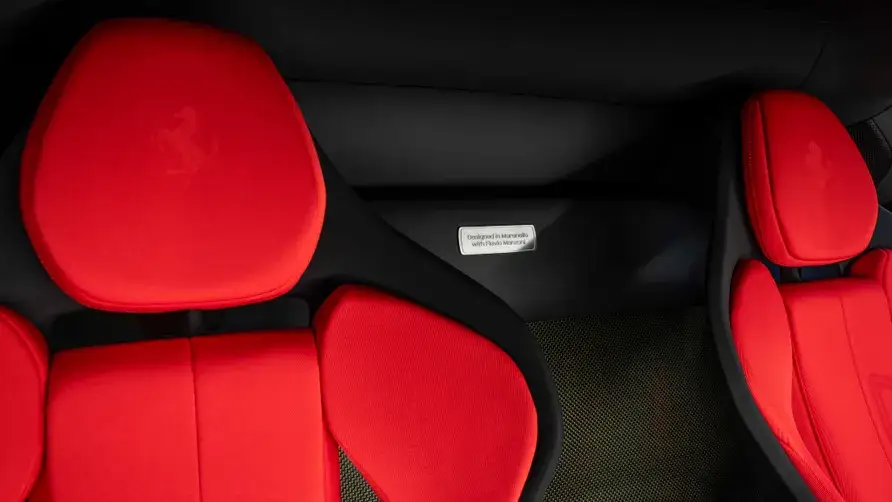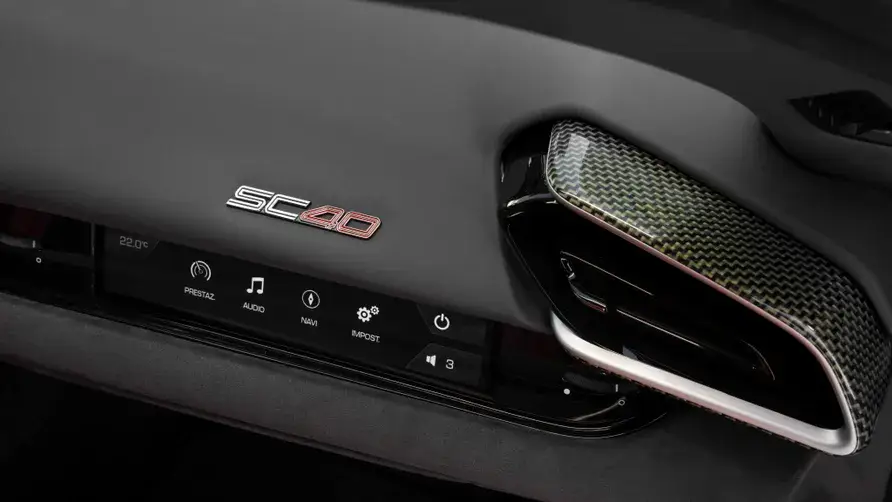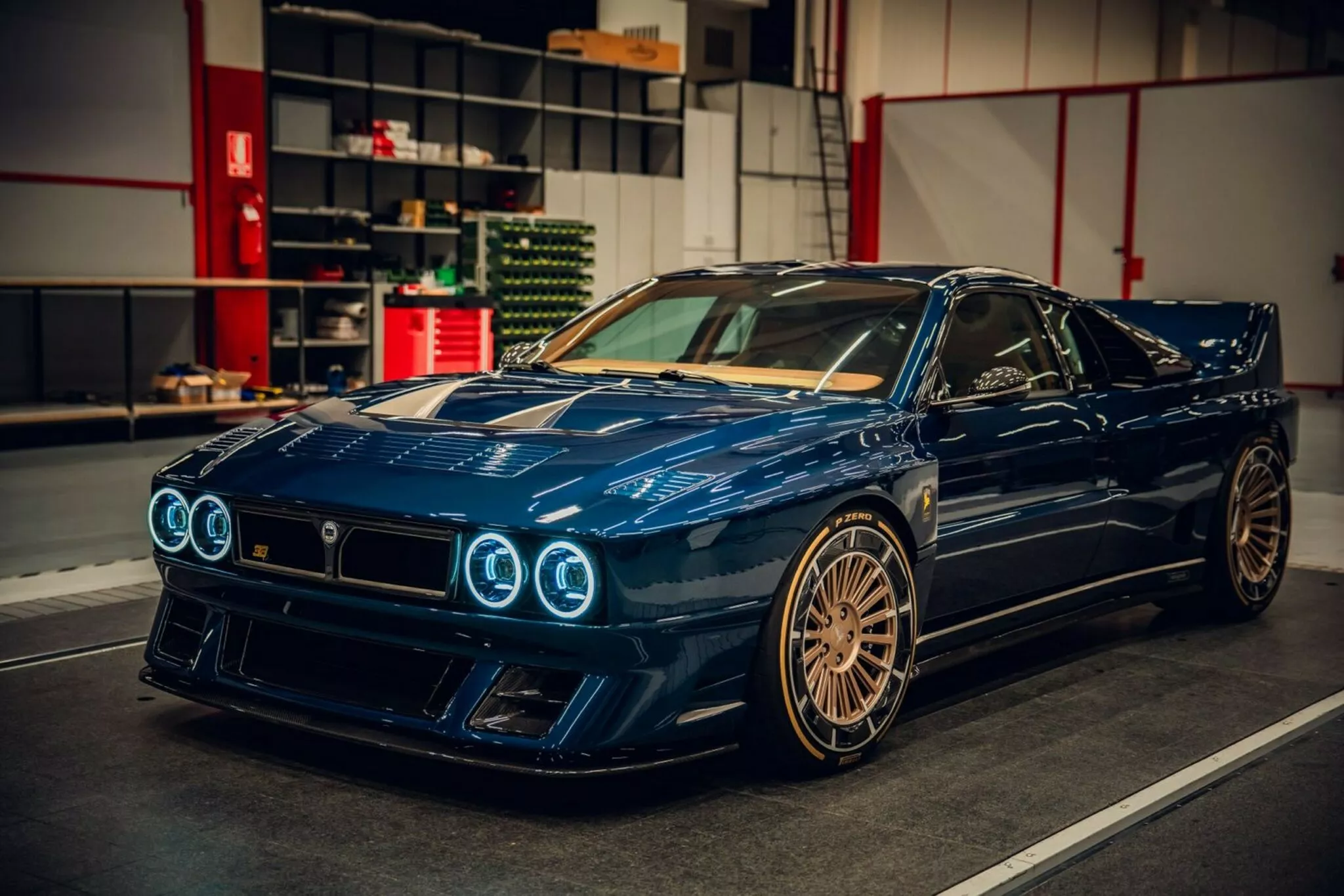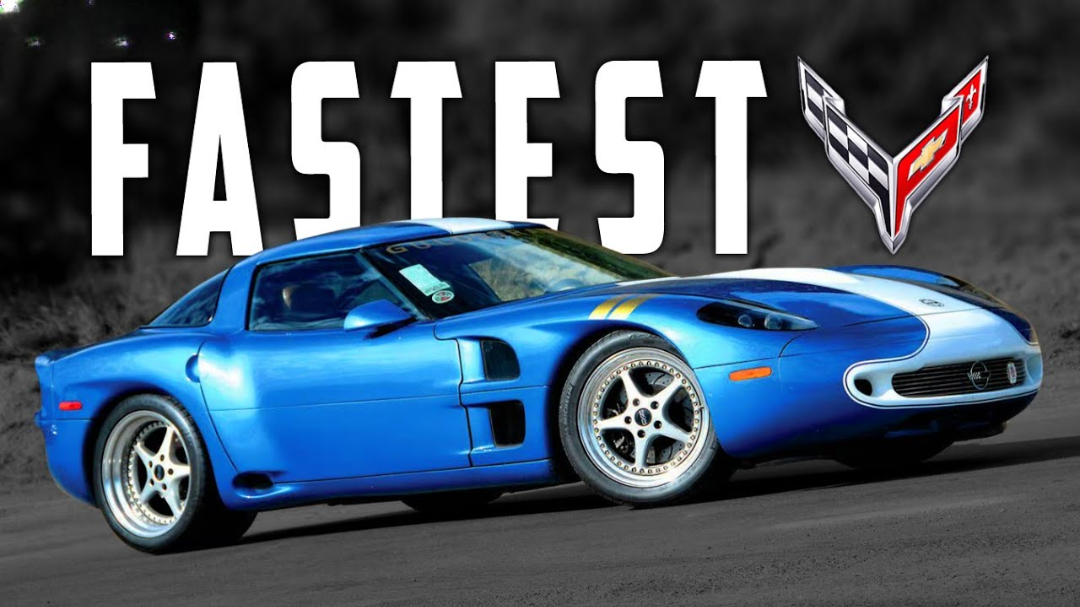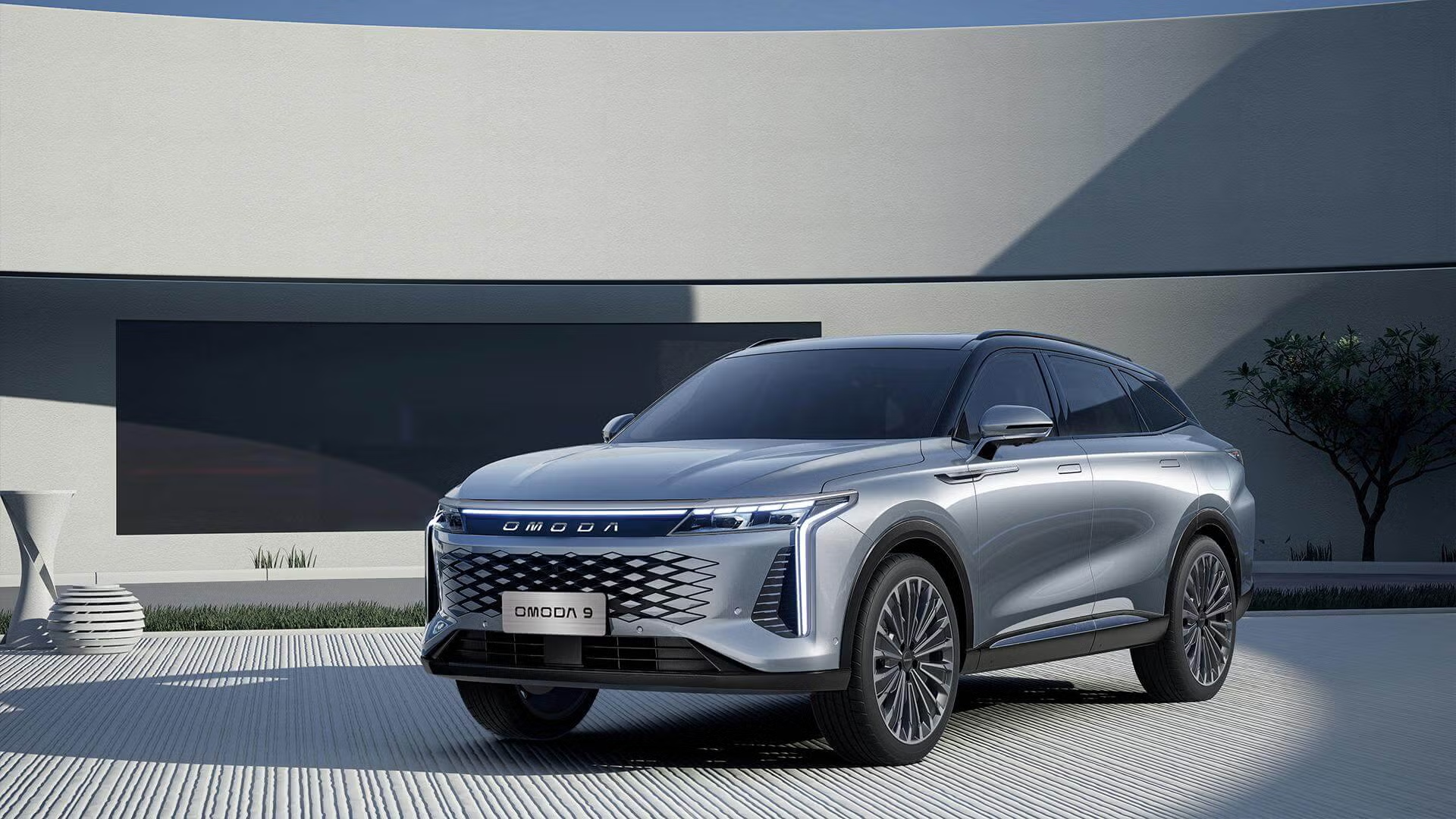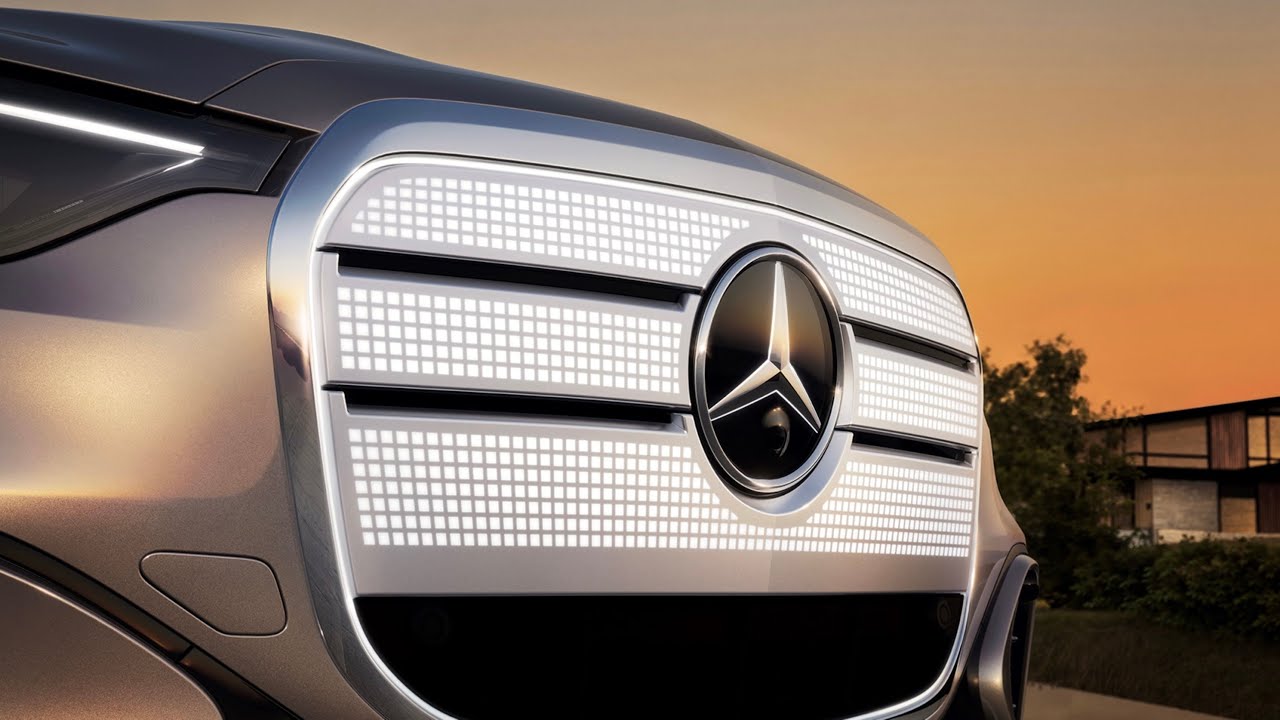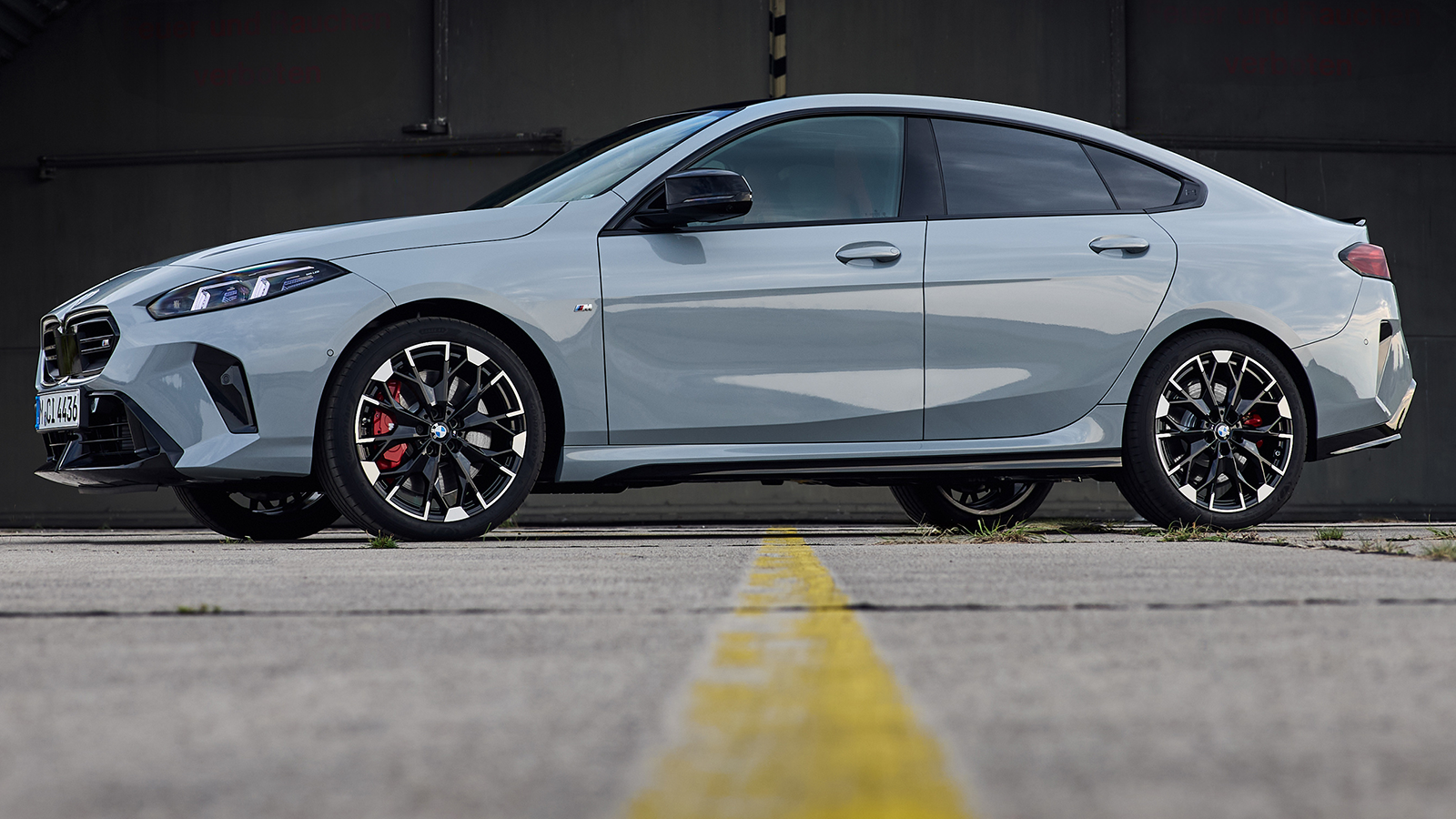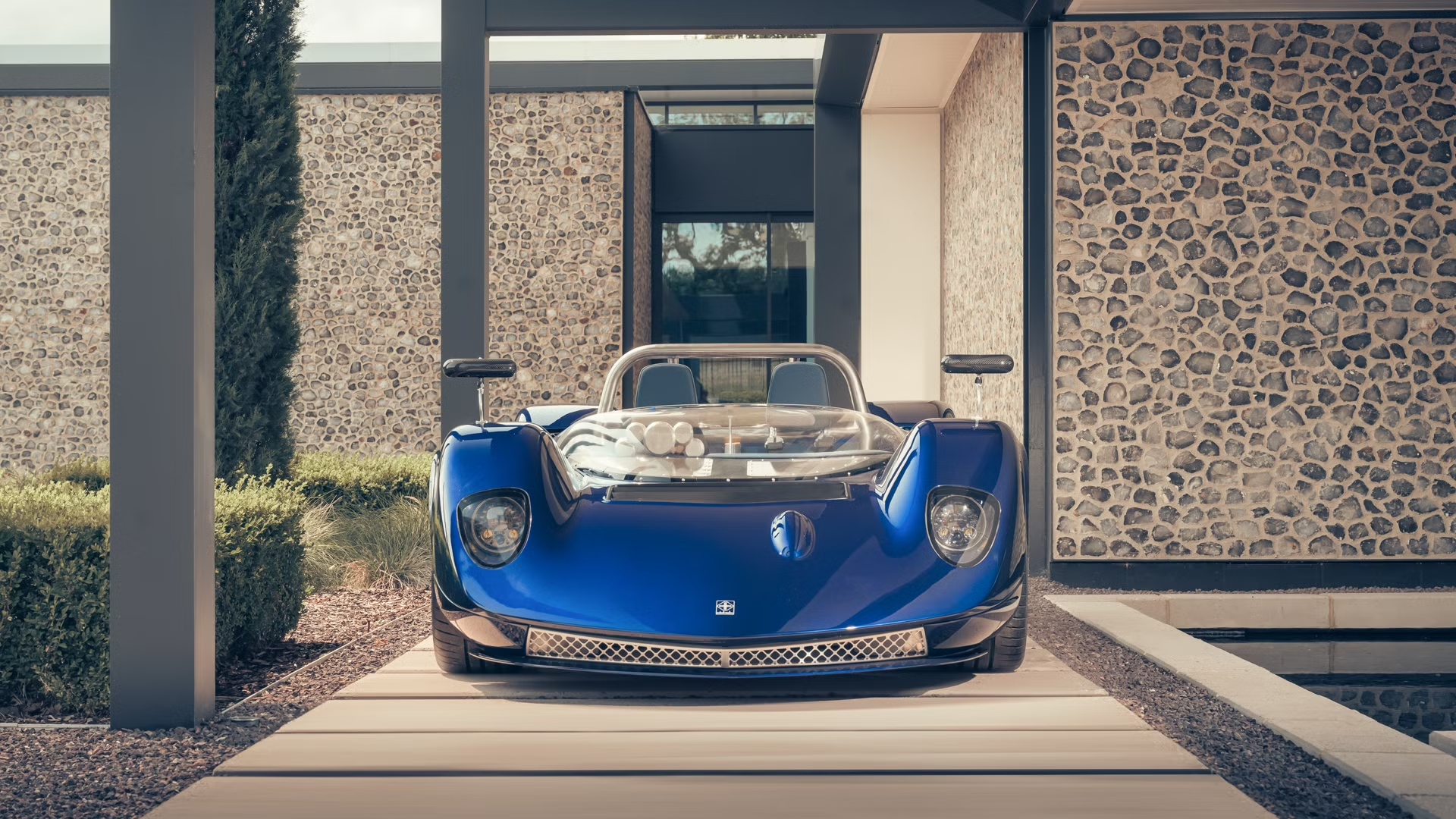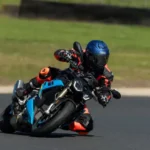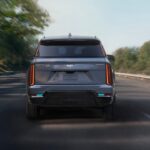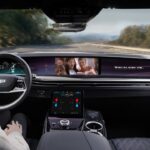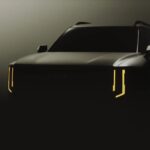Ferrari SC40: Maranello’s Stunning One-Off Homage to the Legendary F40
Ferrari has pulled back the curtain on an extraordinary creation from its exclusive Special Projects program—the Ferrari SC40, a breathtaking one-off supercar that channels the raw spirit of the legendary F40 into a contemporary masterpiece. Built for a single discerning collector and based on the sophisticated 296 GTB platform, this unique berlinetta represents where automotive heritage meets cutting-edge hybrid technology.
A Living Tribute to Ferrari’s Most Iconic Supercar
The SC40 name immediately signals its heritage connection—a direct nod to the F40, which debuted in July 1987 as Ferrari’s 40th-anniversary celebration and the final automobile personally approved by company founder Enzo Ferrari before his death in 1988. The F40 wasn’t merely fast; it became Ferrari’s first production car to exceed 200 mph and embodied pure, unfiltered driving excitement with its twin-turbocharged V8 engine and featherweight 1,100 kg construction.
Rather than creating a literal recreation, Ferrari Design Director Flavio Manzoni and his team at the Ferrari Styling Centre approached the project with nuanced restraint. The SC40 captures the F40’s aggressive DNA through sharp, angular bodywork and muscular proportions while establishing its own distinct visual identity. Ferrari describes the result as having “its own distinct personality” rather than serving as a straightforward reinterpretation.
Engineering Excellence: The 296 GTB Foundation
Beneath its bespoke body panels, the SC40 inherits the complete mechanical architecture of Ferrari’s 296 GTB, including its groundbreaking plug-in hybrid powertrain. At the heart sits a 120-degree 2,992 cc twin-turbocharged V6 engine generating 663 horsepower at 8,000 rpm—a configuration that marks Ferrari’s return to six-cylinder power for the first time since the 1970s.
The internal combustion engine works in concert with a 167-horsepower electric motor derived from Formula 1 MGU-K (Motor Generator Unit, Kinetic) technology. Combined system output reaches a formidable 830 horsepower (610 kW) at 8,000 rpm with maximum torque of 740 Nm. Power flows exclusively to the rear wheels through an 8-speed F1 dual-clutch transmission.
A 7.45 kWh high-voltage battery pack enables pure electric operation for approximately 25 kilometers, though performance remains the primary focus. The SC40 rockets from 0-100 km/h in just 2.9 seconds, reaches 200 km/h in 7.3 seconds, and achieves a top speed exceeding 330 km/h. From 200 km/h, the carbon-ceramic brakes (398mm front, 360mm rear) bring the car to a complete stop in just 107 meters.
Design Language: Angular Aggression Meets Modern Sculpture
The SC40’s exterior design deliberately echoes F40 design elements while incorporating contemporary sophistication. The front fascia features headlights that extend dramatically downward into the lower air intake, creating a distinctly modern interpretation compared to the F40’s elevated lamp placement. A full-width lower air intake dominates the nose, flanked by rectangular brake cooling ducts.
Along the profile, triangular carbon-fiber accents and substantial intercooler air intakes provide a modern reinterpretation of the classic NACA ducts and louvres that characterized the F40’s functional aesthetic. Vertical lines define the front fenders, door cuts, and engine cover, establishing a cohesive geometric theme.
The rear treatment proves most faithful to the F40 inspiration, crowned by a prominent fixed wing that extends upward from the engine cover. Smoked Lexan louvres reveal the turbocharged V6 powertrain below—a direct homage to the F40’s visible twin-turbo V8. The SC40 script appears engraved in relief on the rear wing side, marking this creation’s exclusive status.
Ferrari specified bespoke Bianco SC40 white paint for the exterior, a departure from the iconic Rosso Corsa traditionally associated with the F40. Custom brushed metal wheels with diamond-cut sections and black spokes complete the rolling chassis.
Interior Craftsmanship: Kevlar Returns to Ferrari
Inside, the SC40 cabin resurrects carbon-Kevlar composite material—a significant nod to the F40’s pioneering use of this aerospace-derived material. The F40 was among the world’s first series production cars to employ carbon-fiber and Kevlar extensively in its body construction, and Ferrari redeveloped this material specifically for the SC40 project.
Carbon-Kevlar appears in the footwells, behind the seats, on floor mats, steering wheel, dashboard inserts, engine bay, and front trunk. These applications blend with charcoal Alcantara upholstery and red Jacquard fabric accents, creating a race-inspired environment with premium tactile qualities.
The material choice represents more than aesthetics—carbon-Kevlar offers exceptional strength-to-weight ratios while displaying a distinctive woven appearance that connects today’s supercar technology to the F40’s revolutionary composite construction.
The Special Projects Program: Ferrari’s Ultimate Personalization
The SC40 emerges from Ferrari’s highly exclusive Special Projects division, established in 2008 to revive the coachbuilding tradition where wealthy patrons commissioned custom-bodied automobiles on manufacturer chassis. This program allows Ferrari’s most valued clients—typically selected from the top 250 customers—to collaborate directly with Maranello’s designers and engineers over 18-24 months to realize unique automotive visions.
Under Flavio Manzoni’s creative leadership since 2010, Ferrari’s in-house design capabilities have expanded dramatically. Manzoni, who previously held senior design positions at Lancia, SEAT, and Volkswagen Group before joining Ferrari, established the Centro Stile Ferrari (Ferrari Styling Centre) that now handles both series production designs and bespoke Special Projects commissions.
Ferrari produces only two to three Special Projects vehicles annually, ensuring extreme exclusivity. While official pricing remains undisclosed, industry sources suggest these one-off creations typically cost well above AU$5 million (approximately US$3-5 million), reflecting extensive custom design work, hand fabrication, and the inherent rarity.
Notable past Special Projects include the P540 Superfast Aperta (2009), the SP12 EC commissioned by musician Eric Clapton (2012), the F12 TRS (2014), and the 458 MM Speciale (2016). Each represents a unique interpretation of Ferrari design language tailored to individual client preferences while maintaining full road-legal homologation.
Performance Specifications at a Glance
Powertrain:
-
Engine: 120° V6, 2,992 cc twin-turbocharged
-
ICE Power: 663 hp at 8,000 rpm
-
Combined Hybrid Power: 830 hp (610 kW) at 8,000 rpm
-
Maximum Torque: 740 Nm at 6,250 rpm
-
Maximum Revs: 8,500 rpm
-
Battery: 7.45 kWh high-voltage
-
Transmission: 8-speed F1 DCT
-
Drive: Rear-wheel drive
Performance:
-
0-100 km/h: 2.9 seconds
-
0-200 km/h: 7.3 seconds
-
Top Speed: Over 330 km/h
-
Braking 200-0 km/h: 107 meters
Dimensions & Weight:
-
Length: 4,700 mm
-
Width: 1,975 mm
-
Height: 1,198 mm
-
Wheelbase: 2,600 mm
-
Dry Weight: 1,550 kg
-
Weight/Power Ratio: 1.87 kg/hp
-
Weight Distribution: 41.5% front / 58.5% rear
Heritage Meets Electrification: The Modern Supercar Paradox
The SC40 encapsulates a fascinating contradiction in contemporary supercar development. Ferrari selected the F40—perhaps the purest expression of analog supercar philosophy—as inspiration for a vehicle employing sophisticated hybrid technology and electronic management systems.
The original F40 featured no anti-lock brakes, no traction control, no power steering assistance, and certainly no hybrid system. Its mission centered on delivering unadulterated mechanical feedback and driver engagement. The SC40, conversely, incorporates advanced electronic stability control (eSSC), electronic differential control (eDiff), six-way chassis dynamic sensing (6w-CDS), and high-performance ABS with energy recovery.
Yet this technological evolution serves similar goals. The 296 GTB’s hybrid architecture doesn’t diminish engagement—the electric motor’s instant torque delivery and seamless integration via the Transition Manager Actuator (TMA) enhance throttle response and driving enjoyment while providing zero-emission capability for urban environments.
Ferrari deliberately tuned the V6 exhaust note to evoke the “harmony of high-frequency notes” characteristic of naturally aspirated V12 engines, ensuring emotional connection remains paramount despite forced induction and electrification. During development, engineers nicknamed this powerplant “piccolo V12” (little V12) in recognition of its sonic character.
The Broader Context: Tribute Cars and Modern Classics
The SC40 joins a growing movement where manufacturers and specialized coachbuilders create contemporary interpretations of historic models. Ferrari’s own Icona series, which includes the Monza SP1/SP2 and Daytona SP3, similarly draws inspiration from 1960s racing prototypes while employing modern platforms and technology.
Other notable tributes include the Kimera EVO37 (inspired by the Lancia 037 rally car), Touring Superleggera’s Aero 3 (referencing 1930s Alfa Romeo designs), and various continuation series from manufacturers like Aston Martin and Jaguar. These projects satisfy collector desire for classic aesthetics married to contemporary reliability, performance, and safety.
The trend reflects a nostalgic appreciation for design purity from earlier eras while acknowledging that modern engineering offers genuine advantages in usability, comfort, and capability. For manufacturers, these limited-edition models generate substantial profit margins and strengthen brand heritage connections without requiring mass-market viability.
Viewing the SC40: Museum Display at Maranello
Ferrari has placed a style model of the SC40 on public display at the Ferrari Museum in Maranello starting October 18, 2025, allowing enthusiasts to appreciate Manzoni’s design work firsthand. This represents a rare opportunity to study a Special Projects creation, as many remain in private collections away from public view.
The actual functioning SC40 remains with its anonymous commissioner, who participated directly in the design process over multiple factory visits during the development period. The client’s vision—combining F40 inspiration with 296 GTB performance—resulted in a vehicle that honors Ferrari’s past while embracing its electrified future.
World First Farrari EV which Gonna Be shine Your Life- Ferrari’s First Electric Beast: 1000+ HP Elettrica Teased with Chassis Secrets and Jaw-Dropping Specs
Source- Youtube & topgear
